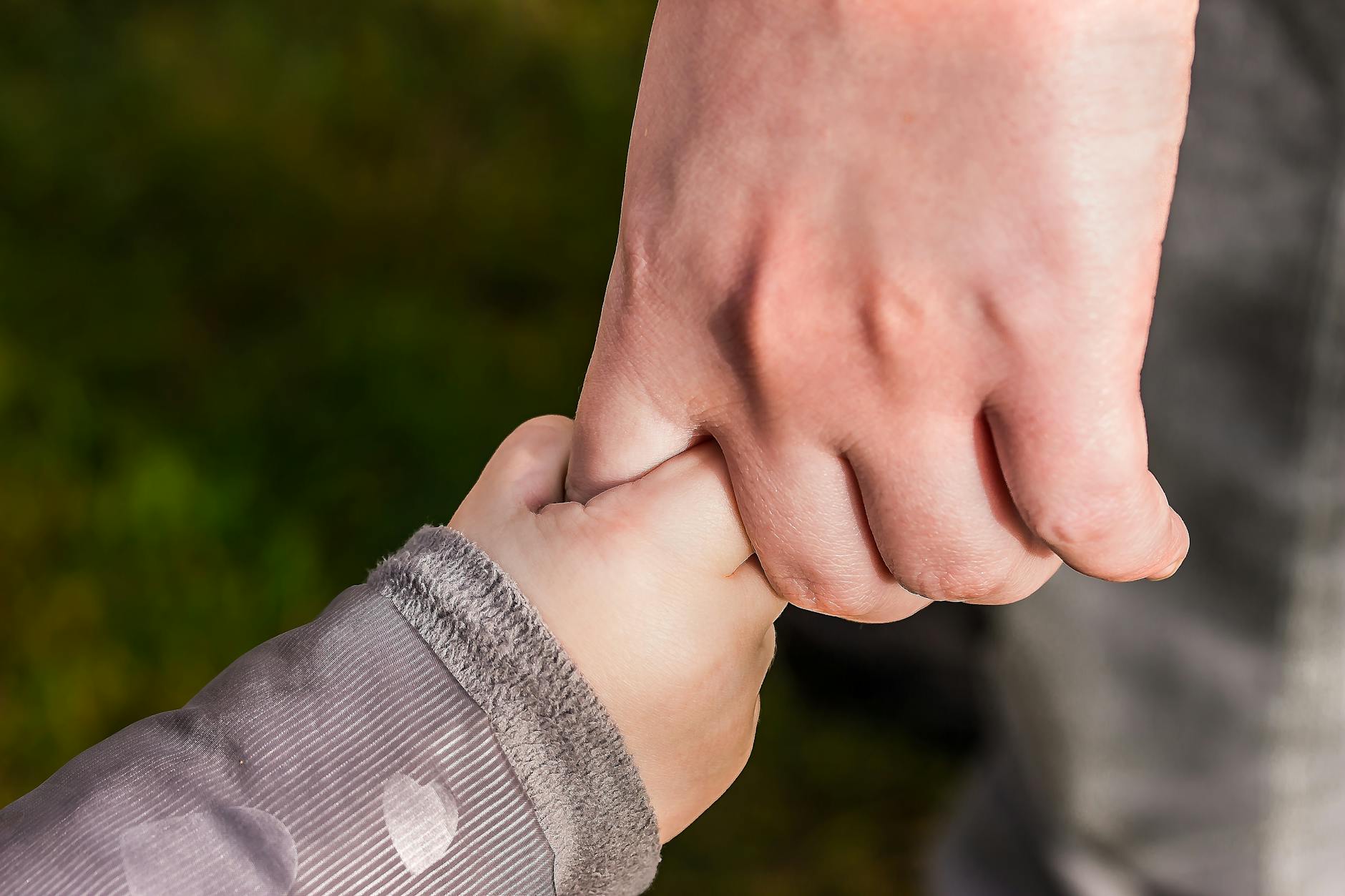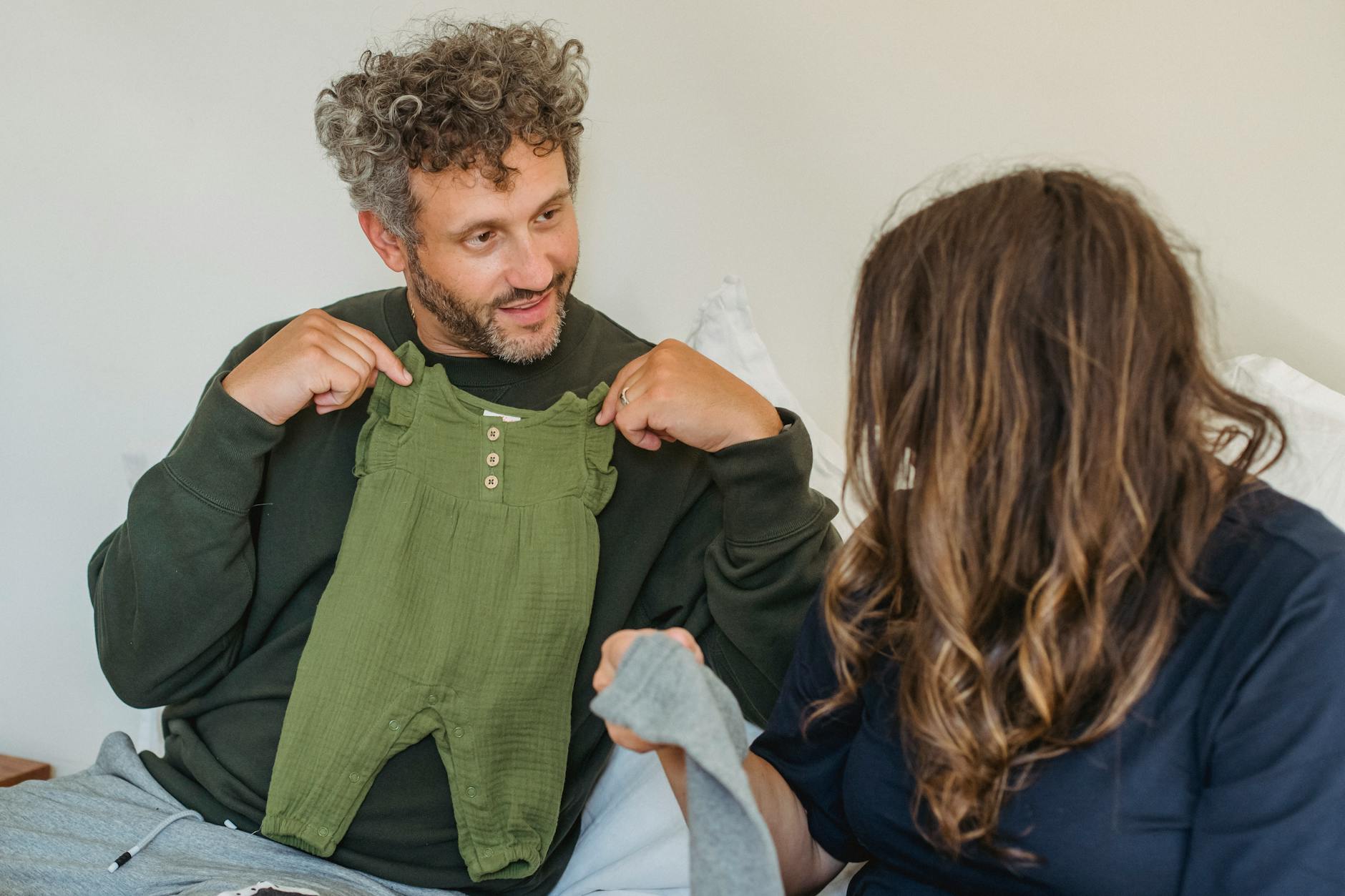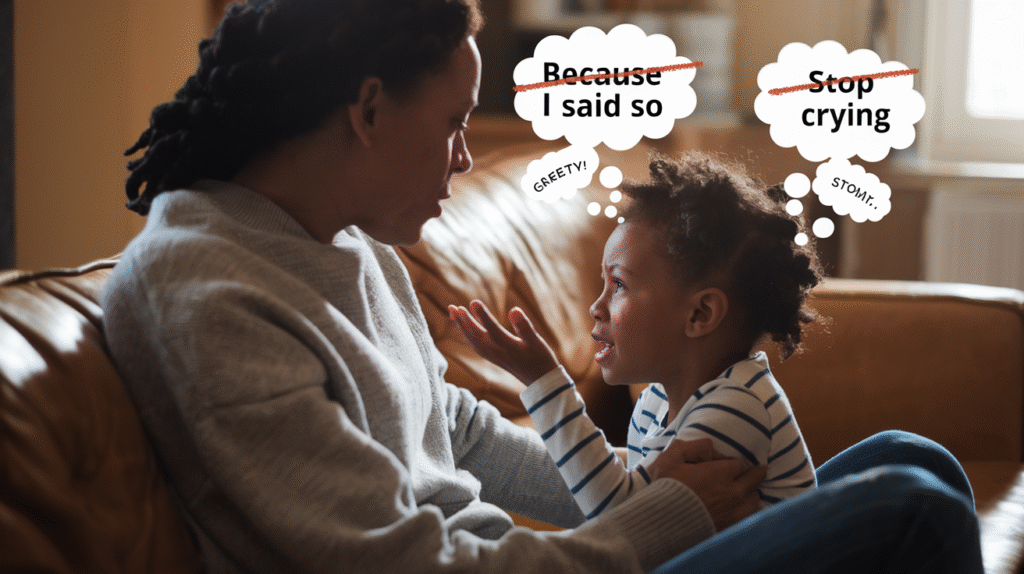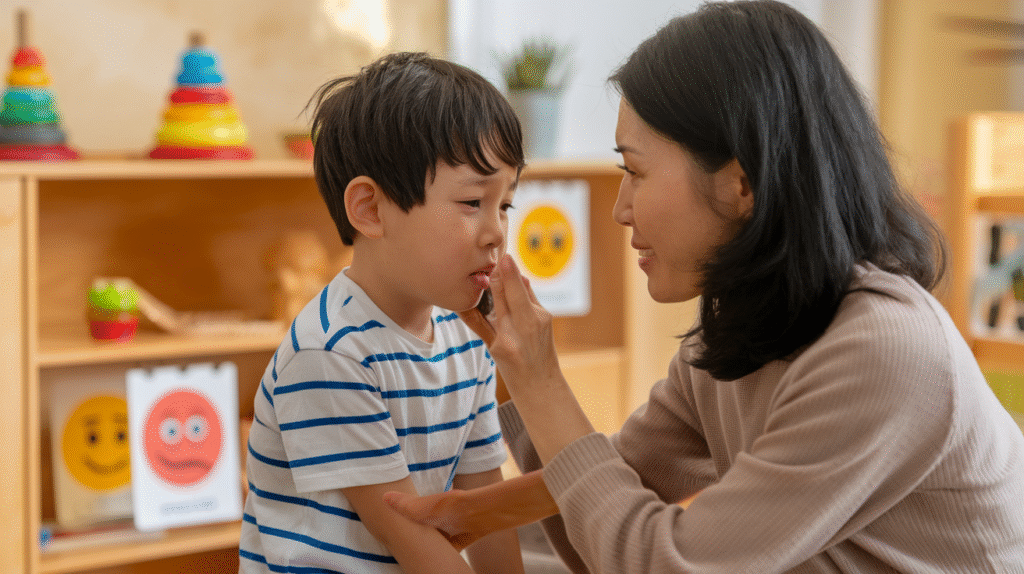
Remember the last time your kid had a meltdown and you responded with a lecture about appropriate behavior? How’d that work out for you?
Most parents know the frustration cycle all too well. Your child acts out, you correct them, they resist harder, you get more frustrated. Rinse and repeat.
But what if the secret to raising emotionally healthy kids isn’t about perfecting your discipline techniques? Research shows that prioritizing connection over correction creates stronger parent-child bonds and better behavioral outcomes.
When you focus on understanding your child’s needs rather than controlling their actions, something magical happens. Trust builds. Communication opens. Resistance melts.
So what exactly does “connection before correction” look like in those heated real-life parenting moments when you’re already at your wit’s end?
Understanding Connection-Based Parenting

The Science Behind Parent-Child Connection
Brain studies tell a fascinating story: when you connect with your child, their brain literally changes. Oxytocin—the “love hormone”—floods their system, building neural pathways that help them feel safe. This isn’t fluffy stuff—it’s hardcore neuroscience.
When you respond to your crying baby, you’re not “spoiling” them. You’re actually helping their brain develop properly. Kids who feel securely connected show better emotional regulation and lower stress hormones. That’s right—hugs and comfort actually build stronger brains.
Why Traditional Discipline Often Fails
Ever notice how time-outs and punishment seem to work temporarily but the same behaviors keep popping up? That’s because traditional discipline addresses symptoms, not causes.
Kids don’t misbehave because they’re “testing limits.” They misbehave because they have unmet needs or lack skills to handle big emotions.
Think about it—when you’re stressed, does someone punishing you help? Or does understanding and support work better? Kids aren’t mini-adults with fully developed brains. Their prefrontal cortex (the judgment center) is still under construction until their mid-20s!
How Connection Builds Resilience in Children
Resilient kids aren’t born—they’re built through relationships. When children know someone’s got their back, they take more healthy risks and bounce back faster from setbacks.
Connected kids learn that feelings aren’t scary. They understand emotions are like weather—sometimes stormy, but always passing. This emotional intelligence stays with them for life.
Breaking Generational Discipline Patterns
Many of us parent how we were parented. “I was spanked and turned out fine” keeps harmful cycles going.
Breaking these patterns isn’t about judging our parents—they did their best with what they knew. It’s about choosing differently now that we know better.
Connection-based parenting isn’t permissive. It’s actually harder work than traditional discipline because it requires us to manage our own emotions first. But the payoff? Deeper bonds and children who behave well because they want to, not because they’re afraid.
Building Your Connection Toolkit

A. Active Listening Techniques That Strengthen Bonds
Parenting isn’t just about talking – it’s about really hearing what your kids are saying. When your five-year-old is having a meltdown about the wrong color cup, they’re not actually upset about the cup. There’s something deeper happening.
Try these game-changing listening moves:
- Get on their level physically – crouch down, make eye contact
- Put your phone down completely (yes, completely)
- Reflect back what you hear: “You’re really upset about the blue cup”
- Ask open questions instead of yes/no ones
- Give them your full attention for even just 5 minutes
What you don’t say matters just as much. Your facial expression, nodding, and those little “mmhmm” sounds show your child you’re truly present.
B. Creating Daily Connection Rituals
The magic happens in the everyday moments, not the big vacation memories.
Here’s what works for actual families:
- Morning high-fives or special handshakes before school
- After-school “rose and thorn” check-ins (best and hardest part of the day)
- Bedtime “three good things” gratitude practice
- Sunday pancake breakfasts where everyone helps
- Car ride “no phone zones” for real conversation
These tiny rituals become your family’s emotional glue. My daughter and I have a special knock sequence on her door every night – it takes two seconds but means everything to her.
C. Using Empathy to Navigate Difficult Behaviors
When your kid is losing it in the grocery store, empathy feels impossible. But here’s the truth: their behavior makes perfect sense to them.
Their tantrum is actually communication. They’re overwhelmed, tired, hungry, or feeling powerless. Your job isn’t fixing the behavior first – it’s connecting to the feeling behind it.
Try saying: “I see you’re really upset right now. It’s hard when we can’t get what we want.” Then wait. Breathe. Their big feelings need space before solutions.
The real power move? Sharing your own struggles: “Sometimes I feel frustrated too when things don’t go my way. Last week when my computer crashed, I wanted to scream.”
D. Age-Appropriate Connection Strategies
Connection looks different at every stage:
Babies & Toddlers (0-3)
Physical touch, eye contact, and responsive caregiving build their trust. Narrate your day together even if they can’t respond yet.
Preschoolers (3-5)
Play is their language. Get silly, be the monster in their game, build forts. These moments matter more than perfect educational activities.
School-Age (6-12)
Show interest in their world – yes, even that endless Minecraft explanation. Share bits of your own childhood. Create inside jokes and family traditions.
Teens (13+)
Respect their growing independence. Text them memes. Drive them places and just listen. Be available without interrogating. Remember that eye-rolling is developmentally normal (though still annoying).
E. Connecting Through Play and Shared Activities
Drop the “quality time” pressure and find 10 minutes to simply play their way.
Some connection gold mines:
- Cooking simple meals together
- Walking the dog while chatting
- Building LEGO without correcting their design
- Reading side-by-side (not necessarily the same book)
- Playing board games where you sometimes lose on purpose
The key? Follow their lead sometimes. When my son wanted to show me his video game, I put aside my “screens are bad” mindset and let him teach me. His pride in being the expert created more connection than a dozen forced “educational” activities.
From Punishment to Problem-Solving

A. Reframing “Bad Behavior” as Communication
When your child throws a tantrum in the grocery store, they’re not trying to ruin your day. They’re telling you something without words. Maybe they’re hungry, tired, overwhelmed, or just need connection.
Once I watched a mom whose toddler was screaming about a toy. Instead of getting embarrassed, she knelt down and said, “You really want that truck, huh? It looks super cool.” The crying stopped almost instantly.
That’s the magic of seeing behavior as communication. Your kid isn’t giving you a hard time—they’re having a hard time.
Next time your child acts out, ask yourself:
- What need isn’t being met?
- What skill are they missing?
- What are they trying to tell me?
B. Teaching Skills Instead of Enforcing Rules
Rules without skills set kids up to fail. Think about it—we tell kids “don’t hit” but often skip teaching them what to do instead when they’re furious.
The shift happens when you move from enforcer to coach:
| Instead of | Try This |
|---|---|
| “No yelling!” | “When you’re angry, you can say ‘I need space'” |
| “Stop running!” | “Walking feet in the house, running feet outside” |
| “Don’t grab toys!” | “You can say ‘May I have a turn when you’re done?'” |
C. Collaborative Problem-Solving Approaches
Problem-solving with your kids (not for them) builds their confidence and critical thinking.
The basic formula is surprisingly simple:
- Acknowledge feelings: “You seem frustrated about bedtime.”
- State your concern: “I’m worried you won’t get enough rest.”
- Brainstorm together: “What could we do that works for both of us?”
- Try a solution: “Let’s try reading an extra book if you get in pajamas right away.”
Kids who help create solutions are way more motivated to follow through with them.
D. Setting Boundaries While Maintaining Connection
Boundaries and connection aren’t opposites—they’re partners. The strongest families have both.
Firm boundaries actually make kids feel secure when delivered with warmth. The trick is setting limits while keeping your relationship intact.
Try saying: “I won’t let you hit your brother, AND I’ll help you find ways to tell him you’re angry,” or “We need to leave the park now AND I see you’re having so much fun. It’s hard to stop sometimes.”
That little word “and” bridges the gap between what needs to happen and honoring your child’s feelings about it.
Handling Challenging Moments

A. Staying Connected During Tantrums and Meltdowns
When your child is throwing themselves on the floor at Target, it’s hard not to feel like everyone’s judging your parenting. But here’s the truth: tantrums aren’t failures—they’re opportunities to show your child you’re their safe space.
Stay physically close (if they’ll let you) and keep your voice calm. Sometimes just saying, “I’m right here” is enough. Don’t try to reason with them mid-meltdown—their thinking brain is offline. Instead, validate: “You’re really upset. It’s hard when we can’t get what we want.”
Remember, connection doesn’t mean giving in. You can hold boundaries while holding space for feelings.
B. When You Lose Your Cool: Repair and Reconnect
We all snap sometimes. Kids push buttons we didn’t even know we had.
The magic isn’t in never messing up—it’s in what you do after. A genuine “I’m sorry I yelled. You didn’t deserve that” teaches more than perfect parenting ever could.
Show them how repair works: “I got frustrated because I was tired. Next time I’ll take a deep breath first.” Then move forward—no shame spiral needed.
C. Supporting Children Through Big Emotions
Kids’ feelings are as real as ours, just wrapped in smaller packages. Your job isn’t to fix or minimize them.
Try the emotional sandwich technique:
- Acknowledge: “You’re really disappointed.”
- Set the limit: “We still can’t have ice cream before dinner.”
- Offer alternatives: “Would you like to help make tonight’s dessert?”
The goal isn’t to eliminate tears—it’s teaching them feelings are normal and manageable.
D. Addressing Safety Concerns Without Breaking Connection
Some behaviors require immediate intervention. When your toddler’s about to touch the hot stove, you move fast.
The key is addressing the danger without shame. After grabbing them from danger, reconnect: “That scared me because the stove could hurt you. I moved you quickly to keep you safe.”
For ongoing safety issues, problem-solve together: “Jumping on the couch isn’t safe. Where could we jump instead?” This preserves connection while teaching boundaries.
The Long-Term Benefits of Connection-Based Parenting

Building Emotional Intelligence for Life
When you choose connection over correction, you’re not just making today easier – you’re building your child’s emotional toolkit for life. Kids who grow up with parents who listen and validate their feelings learn to recognize and manage emotions effectively.
I’ve seen this play out countless times: a child who feels safe sharing big feelings with mom or dad grows into a teen who can say “I’m stressed about this test” instead of slamming doors. They develop the language and awareness to navigate their emotional world.
This emotional intelligence becomes their superpower in relationships, work, and life’s challenges. They’re the adults who can handle criticism without crumbling, express needs without exploding, and support others through tough times.
Raising Self-Motivated and Cooperative Kids
Want to know the secret to kids who clean their rooms without being asked (okay, with minimal asking)? Connection.
Children who feel connected to their parents are naturally more cooperative. Not because they fear punishment, but because they value the relationship. This intrinsic motivation sticks around when punishment-based compliance fades.
A child who helps because “we’re a team” rather than “I’ll get in trouble if I don’t” is developing the inner drive that leads to success in school, careers, and life goals.
Strengthening Family Bonds That Last
The parent-child connection you build today becomes the foundation for your relationship for decades to come.
Parents who prioritize connection often find their teens actually talk to them (shocking, I know). They become the parents adult children call when celebrating victories or navigating challenges.
These family bonds create a secure base from which children can explore the world confidently, knowing they always have a safe harbor to return to.

Building a strong parent-child connection creates the foundation for effective discipline and mutual respect. By prioritizing relationship-building through active listening, quality time, and emotional attunement, parents establish trust that makes guidance more impactful. Moving away from punitive approaches toward collaborative problem-solving helps children develop crucial life skills while maintaining their dignity and strengthening your bond.
The journey toward connection-based parenting isn’t about perfection—it’s about progress and commitment. When challenging moments arise, remember that maintaining connection through co-regulation and empathy creates learning opportunities rather than power struggles. Your investment in this approach pays dividends in raising children who are emotionally intelligent, resilient, and secure in their relationships both now and throughout their lives.




